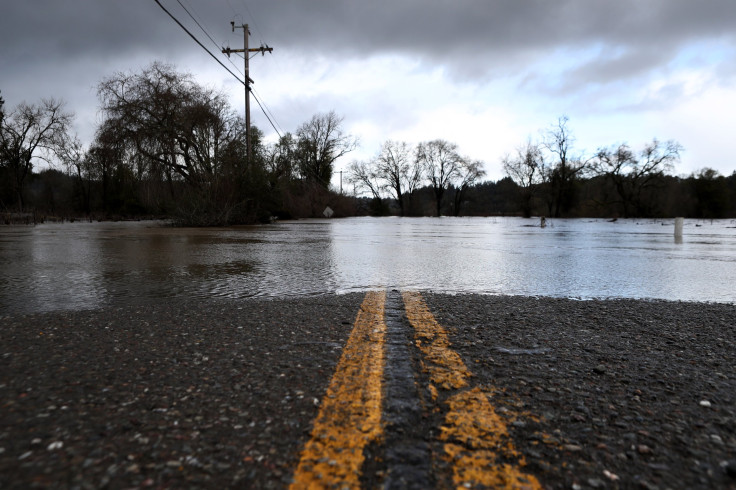Climate Change Cost The United States $165 Billion In 2022, And 2023 Could Be Even More Expensive
Climate change related disasters have been increasing in frequency in recent years, and the costs are starting to add up, according to a new report from the National Oceanic and Atmospheric Administration (NOAA).
According to an annual report, the United States alone saw 18 different billion-dollar weather and climate disasters in 2022, which caused the deaths of 474 people and saw damages that cost a staggering $165 billion. These events include extreme weather phenomena that are fueled by human-caused climate change. Even more troubling, the data found that the U.S. has experienced a billion-dollar disaster every 18 days on average between 2017 and 2021, compared to 82 days in the 1980s—and those numbers are only expected to keep trending in the wrong direction in 2023 and beyond, despite pledges to reduce emissions and to try to reverse the impacts on climate change before it's too late.
"Climate change is creating more and more intense, extreme events that cause significant damage and often sets off cascading hazards like intense drought, followed by devastating wildfires, followed by dangerous flooding and mudslides," Dr. Rick Spinrad, NOAA's administrator, told NPR.
(2 of 6) The U.S. experienced 18 #BillionDollarDisasters in 2022 totaling more than $165 billion in damage.
— NOAA (@NOAA) January 10, 2023
122 separate billion-dollar disasters killed at least 5,000 people from 2016–2022.https://t.co/lwb0yKihEk@NOAANCEI @ametsoc #StateOfClimate #AMS2023 pic.twitter.com/FzzsNXSxRA
Among the billion-dollar events in 2022 were six separate Severe Weather events across the country from April-July, including a Central Derecho on June 13, a mega-drought and heat wave in the west and central areas, western wildfires, three different hail storms, including in Texas, one major flooding event in Kentucky and Missouri, two tornado outbreaks, one major winter storm and cold wave and three catastrophic hurricanes in Florida and Puerto Rico.
Among those storms, Hurricane Ian, which made landfall in Florida as a Category 4 and obliterated entire neighborhoods, cost $112.9 billion alone in damages. It is also not the only hurricane of that strength to make landfall in the United States in recent years.
Since 2017, at least four Category 4 storms of larger have made landfall in the mainland U.S., with Hurricane Harvey, Hurricane Laura, Hurricane Ida and Ian all wreaking massive devastation. A Category 5 storm, Hurricane Michael, did not make landfall in the U.S., but still wreaked devastation as well. According to Bloomberg News, Harvey wreaked even more financial damage than Ian when it made landfall, totaling $148.8 billion in damages. Michael caused $29 billion in damages.
Even storms that did not make landfall in the U.S. or its territories such as Puerto Rico underwent rapid intensification which is concerning.
"There are, unfortunately, several trends that are not going in the right direction for us," Adam Smith, an applied climatologist at NOAA, told NPR. "For example, the United States has been impacted by a landfalling category 4 or 5 hurricane in five out of the last six years."
Overall, 2022's climate disasters tied for the third most costly year on record, landing only behind 2017 and 2005 when it comes to cost. Those years were the ones that saw Hurricane Harvey and Hurricane Katrina also make landfall in the United States, and to date, Katrina is still the hurricane that resulted in the largest cost when it came to damages. Over the last seven years, 122 separate billion-dollar disasters killed at least 5,000 people with more than $1 trillion in damages.
The data is especially concerning as the United States has already begun 2023 off on a less-than-stellar note when it comes to climate events. California has already experienced catastrophic flooding in the first weeks of the year due to "Atmospheric Rivers," and damages are already expected to exceed $1 billion. With the country already in the grips of winter, some areas could be at risk for catastrophic winter storms, with the NOAA predicting below-normal temperatures in the Pacific Northwest and eastward to the western Great Lakes and the Alaska Panhandle, as well as wetter-than-average conditions in western Alaska, the Pacific Northwest, northern Rockies, Great Lakes and Ohio Valley.
An area that could be in for devastation is Buffalo, N.Y., which the NOAA predicted had a 40-50% probable chance of precipitation above normal. The area was already pummeled by a December blizzard that dumped over 50" of snow from Dec. 23-27. It is unclear how much that storm caused financial damage.
Currently, the North Atlantic hurricane season is predicted to have activity 15% below the 1991-2020 30-year storm norm, though it's unclear if storms that develop are expected to all rapidly intensify into major events that make landfall.

© Copyright IBTimes 2024. All rights reserved.




















